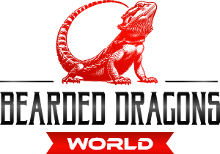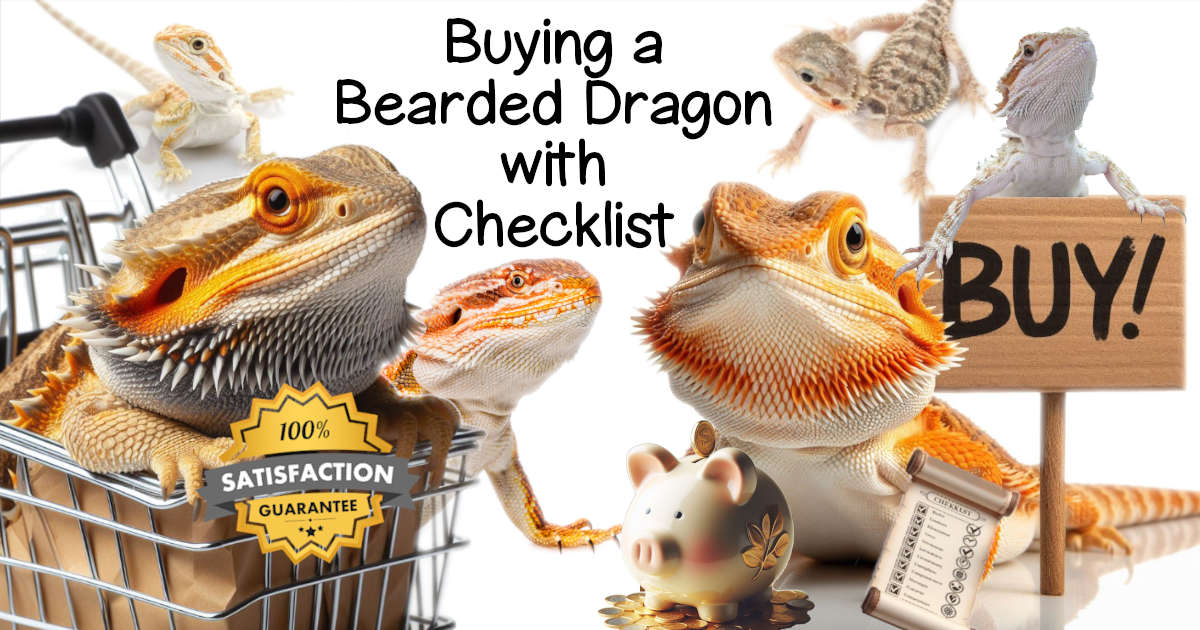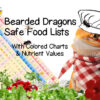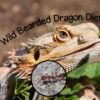What to look for when buying a bearded dragon, to ensure you pick the healthiest and best fit for you is a serious commitment. These unique companions are celebrated for their interactive behaviors and distinctive looks, attracting both experienced enthusiasts and newcomers.
There are various factors to consider when buying a bearded dragon, such as its health, age, and history. Understanding the origins of the bearded dragon, as well as the credibility and methods of the breeder, private seller, or pet store, is an important part of making a responsible and ethical acquisition. Looking past the initial cost to think about the future relationship and ongoing expenses is key to ensuring a harmonious match between you and your new pet.
Jump To…
Key Takeaways
- Responsible bearded dragon ownership begins with informed purchasing decisions.
- Verifying the seller’s reputation is a cornerstone of ethical pet acquisition.
- A thorough health assessment and understanding ongoing care costs are essential.
- A pet guarantee will support responsible buying and selling.
Options for Buying a Bearded Dragon
Options for buying a bearded dragon include private sellers, breeders, and adoption channels. Each avenue offers unique benefits and requires specific considerations. When buying from a breeder or pet store, assess their health protocols, reputation, and the lineage of the bearded dragons. Adoption, on the other hand, provides a chance to offer a home to a bearded dragon in need, but may not always have detailed background information available.
Outside of the standard means of buying a bearded dragon, there are other ways to welcome a bearded dragon into your life. Joining reptile enthusiast groups or forums can connect you with individuals looking to rehome their pets. Reptile expos and shows are also excellent places to meet breeders and learn more about the care requirements and characteristics of bearded dragons. Regardless of the source, ensuring the well-being of the bearded dragon and compatibility with your lifestyle is paramount.
The options for buying a bearded dragon in Australia are essentially the same as other countries. However, check if you need to obtain a reptile licence for keeping a bearded dragon in your state before buying.

Buying a Pre-owned Bearded Dragon
Buying a Bearded Dragon from a Pet Store
When considering the purchase of a pre-owned bearded dragon from a pet store, assess the environment and care standards of the establishment. A reputable pet store should maintain clean, well-organized habitats for their reptiles, with appropriate heating, lighting, and space for the bearded dragons to move around.
Ask about the origin of the bearded dragon, its age, health history, and any previous owners. This information can provide some insights into its temperament and care needs. Seeing a pet to choose from in a pet store can certainly prompt impulse buying. Avoid buying a bearded dragon on impulse, the future costs and emotional pain could outweigh the initial sentiment. Settle the excitment and logically observe the bearded dragon’s health and behavior to make an informed decision.
In addition to the physical environment, inquire about the pet store’s policies on returns and health guarantees. Look for a store that will offer support and advice for new owners, ensuring a smooth transition for both you and the bearded dragon.
Engaging with the store staff and ask questions about their expertise and commitment to the animals’ welfare. Some store staff may be knowledgeable keepers themselves, however there will also be those who are simply going to work in a job and giving you information they do not really understand.
Pet stores often profit from selling small tanks and starter kits alongside a bearded dragon purchase. These kits frequently fall short of the necessary standards, leading to additional expenses for proper setup later on, or worse, the failure to upgrade even though your initial good intentions to upgrade were there.
Buying a bearded dragon at a pet store goes beyond a simple purchase; it marks the start of a relationship. The emotional bond begins to develop through interaction and the process of choosing your new pet, making it a significant moment in your journey as a pet owner.

Buying a Bearded Dragon from Breeder or Private Sellers
When purchasing a bearded dragon from a breeder or private seller start by asking detailed questions about the bearded dragon’s age, diet, health history, and reason for sale.
Look for a seller that is transparent and provides comprehensive information, including any medical records or details about the reptiles routine and temperament. Visit the bearded dragon in its current environment if possible. This visit can reveal a lot about how the animal has been cared for and interaction with its owner, which can be indicative of its socialization and health.
Allow for the fact that your very presence may disrupt the bearded dragons normal behaviors. Whether that is the case should become clearly in conversation with the seller.
Establish a rapport with the seller to gauge their reliability and the level of care they have provided for the bearded dragon. Trust your instincts; if something feels off about the situation or the seller’s responses, it may be best to reconsider. The connection with a bearded dragon starts with trust and understanding, both with the animal and its current caregiver. When you find the right match, the sense of fulfillment and excitement for the future with your new pet can be incredibly rewarding.
Adopting a Bearded Dragon
Adopting a bearded dragon is a compassionate choice that can be incredibly fulfilling. Adoption centers and rescue organizations often have bearded dragons in need of a second chance at a loving home. When adopting inquire about the bearded dragon’s history, including any known health issues, its temperament, and how it came to be in the rescue. These organizations typically conduct thorough health checks and can provide insights into the dragon’s personality and needs, which can help you prepare for its care.
Keep in mind that if you adopt a bearded dragon with developing or current health issues that there may be additional expenses. In addition, if it has a handicap then the bearded dragons environment will need to be modified appropriately.
The emotional journey of adopting a bearded dragon can be profound. It’s a journey of giving and receiving; you’re offering a home to a creature that may have been through stress or neglect, and in return, you gain a unique companion.
The process of adoption may involve visits to the rescue to meet potential bearded dragons, which can be both heartwarming and emotional. Connecting with a bearded dragon in this setting, knowing you’re providing it with a loving home, can create a deep bond from the start. Adoption not only transforms the life of the bearded dragon but also enriches the owner’s life with the joy and satisfaction of making a positive difference.
Health Assessment and Age Considerations
When buying a bearded dragon, gaining knowledge on the individual reptile and conducting a complete a health assessment will help you to make an informed decision. Embrace this process with empathy, recognizing the profound impact your care will have on your new companion’s well-being.
7 Point Checklist for Choosing a Healthy Bearded Dragon
When considering buying a bearded dragon, conduct a visual health check as part of ensuring you’re bringing a healthy pet into your home.
A bearded dragon should have bright, clear eyes, a well-fleshed body without visible bones or deformities, and skin free of sores and excessive shedding. Check for an alert demeanor and a strong, even gait as these are good indicators of vitality. Observe the bearded dragon to ensure it is actively engaging with its environment, reflecting a good level of energy and interest
Here is a comprehensive checklist to guide you through the key health indicators and potential concerns you should be aware of:
- Weight and Body Condition
- What to Look For: A balanced physique, with the bearded dragon appearing neither too thin nor overweight.
- Potential Concerns: Malnutrition or obesity can lead to serious health issues.
- Skin and Scales
- What to Look For: Skin and scales should be intact, with no signs of infections, injuries, or irregular lumps or bumps.
- Potential Concerns: The presence of parasites or infections can significantly affect the bearded dragon’s health.
- Respiratory Function
- What to Look For: Clear nostrils and a mouth free from sores. Observe the bearded dragon’s breathing to ensure there is no wheezing or difficulty.
- Potential Concerns: Symptoms like these could indicate respiratory infections.
- Hygiene (Vent Area)
- What to Look For: The vent should be clean and free from any signs of waste or infection.
- Potential Concerns: Poor hygiene in this area can lead to infections and other hygiene-related issues.
- Appetite and Digestive Health
- What to Look For: Normal fecal consistency and a regular appetite are good indicators. Bearded dragons should not refuse food unless they are in a period of brumation (a form of hibernation).
- Potential Concerns: Abnormalities in appetite or feces can signal digestive disorders.
- Tail and Digits
- What to Look For: Missing part of its tail, toes or feet. Missing parts do not exclude buying a bearded dragon but be concious of special needs you may have to accommodate for.
- Potential Concerns: The absence of limbs or tail parts points to previous living conditions that were not conducive to the bearded dragon’s wellbeing. This could be due to various reasons, such as:
- Aggression from Cohabitants: Indicates the bearded dragon might have been housed with other animals that were not compatible, leading to fights or attacks.
- Shedding Complications: Improper humidity levels can lead to incomplete sheds, constricting circulation to extremities and potentially causing them to fall off.
- Unsafe Housing Accessories: Certain substrates or enclosure decorations can catch and injure a bearded dragon’s toes or tail, leading to amputation or self-amputation.
- Behavior
- What to Look For: An active and curious bearded dragon, engaging with its surroundings, signifies vitality.
- Potential Concerns: Disinterest can indicate health and wellbeing issues.
Age Assessment: Determining the Age
When buying a bearded dragon it is natural to want to know its age. It is also important to get a bearded dragon at an age that suits the level of care you can give it.
Babies and juveniles are relatively easy to assess, at least within a period of how many weeks or months old they are. However, determining the precise age of a fully grown bearded dragon can be challenging due to various factors, including individual growth rates, genetics, and the conditions under which the dragon has been kept. Unlike some animals where physical features can be more directly correlated with age, bearded dragons do not have universally reliable age markers after reaching adulthood.
Some aspects that may provide clues to a bearded dragon’s age include:
- Size and Growth: Size is not a definitive measure of age but can give a general indication. Of course the size of an adult bearded dragon is expected to be larger than a juvenile. However, a bearded dragon kept with others could well be under developed.
- Femoral Pores: The development and prominence of femoral pores can indicate sexual maturity, which indicates that it has reached sexual maturity.
- Physical Condition and Wear: Signs of wear such as the condition of the teeth might give some indication of age. A veterinarian might observe certain wear on the teeth or other age-related changes, but these are often quite subtle and subject to individual variation.
- Behavioral Traits: Older bearded dragons might display different behavior patterns compared to younger ones, such as lower activity levels or different social interactions, but these are also influenced by individual personality and health.
A veterinarian with experience in reptiles might provide the best estimate of age based on a combination of physical examination and knowledge of bearded dragon growth and health patterns. However, it’s important to note that even for professionals, determining the exact age of an adult bearded dragon can be speculative rather than precise.
Verifying the Reputation of Breeder or Seller
For peace of mind when buying a bearded dragon assess the reputation of the breeder or seller. A diligent approach to this aid in supporting practices that improve the welfare of animals both now and in the future plus provide you with a better guide on the health and well-being of the pet.
- Website: Some breeders will have a website and social pages that you can review setups and quality of information. A good example is B&K Bearded Dragons in Victoria, Australia.
- Ask for References: Contact prior buyers or pet owners to get feedback on their experiences. A reputable breeder should readily provide references.
- Check Tenure and Experience: Investigate how long the breeder has been working with bearded dragons. Longevity can be a sign of quality and dedication.
- Review Health Guarantees: A commitment to the animal’s health often comes with a health guarantee which should include an agreement whereby you take the animal to the vet for a health baseline and checkup. Clarify the terms of this promise.
- Inquire About After-Sale Support: A good seller offers continued advice and is available to answer questions after the sale.
- Visit the Facility: If possible, visit the breeder to see the conditions in which the dragons are kept. Cleanliness and organization are key indicators of a responsible breeder. Do they appear to be prioritizing the health and wellness of their animals over money?
- Verify Breeder Knowledge: The breeder should exhibit a deep understanding of bearded dragon care, including diet, habitat needs, and common health issues.
- Professional Affiliations: Check if the breeder is part of herpetological societies or breeding programs which can serve as a seal of quality.
- Read Online Reviews: Look for reviews or testimonials on independent websites, forums, or social media. Is there information on their ethical breeding practices?
Pet Guranatee & Initial Vet Checkup
When buying a bearded dragon ensure to negotiate a pet guarantee if it isn’t already offered. A robust pet guarantee should encompass a veterinary examination to be conducted by the buyer on taking ownership and at the cost of the buyer. The vet check is aimed at ensuring the animal’s freedom from any currently unknown health issues.
Incorporating a vet visit into the guarantee allows potential health issues to be promptly identified, reducing the risk of unforeseen medical expenses for the new pet owner. Additionally, receiving a clean bill of health from a qualified veterinarian instills confidence in the buyer, confirming that they are bringing home a pet that has undergone thorough evaluation and been deemed healthy.
Before buying a bearded dragon, schedule a vet checkup within the first 48 hours to assess and establish the new pet’s health baseline. This proactive measure can help uncover potential issues early on and provide valuable insights for future care. Even if the bearded dragon appears healthy initially, this initial vet visit serves as a valueable benchmark for ongoing veterinary care.
The guarantee when buying a bearded dragon will be limited in time as the seller also requires some form of indemnity from the buyer. Once the bearded dragon is out of the sellers care they cannot be responsible for what happens to it and how well, or not, it is cared for.
This proactive approach safeguards the buyer’s investment and demonstrates the seller’s commitment to responsible breeding or selling practices, emphasizing transparency and integrity in the pet industry.
A pet guarantee demonstrates the seller’s dedication to delivering healthy, happy pets to customers while fostering trust and accountability in the buyer-seller relationship. The guarantee typically remains valid for a specified period, often ranging from a few days to several weeks after purchase, after which the buyer may assume responsibility for any health issues, unless covered by a separate warranty or insurance policy.

Cost of Ownership
Initially buying a bearded dagon is the least of the costs of ownership. When considering buying a bearded dragon, also consider the expenses involved in providing proper care. There are some handy calculators for identifying the costs of bearded dragons and for calculating the cost of electricity to keep a bearded dragon.
The initial cost of purchasing a bearded dragon can vary significantly, with prices fluctuating based on the reptile’s age, color, and breeder reputation. However, the financial commitment does not end there. Ongoing costs include:
- Feeding: Bearded dragons have a diverse diet comprising insects, vegetables, and occasional fruits. Plan a regular feeding schedule, which may entail daily expenses.
- Habitat Maintenance: Proper lighting is crucial for bearded dragons to metabolize calcium and maintain overall health. Invest in specialized lighting, including UVB lights, and replace them periodically as their effectiveness diminishes over time.
- Veterinary Care: Regular vet visits are necessary to ensure the bearded dragon remains healthy. Veterinary costs may increase if the dragon encounters any health issues, which are not uncommon in reptiles.
Approximating the total cost of ownership necessitates factoring in the price of the habitat setup, electricity, ongoing supply purchases, and potential unforeseen expenses.
Buying a Bearded Dragon Conclusion
When contemplating buying a bearded dragon, approach the process with diligence. It is important to inquire about the reptile’s history, including its diet, habitat, and any medical concerns. Verifying the bearded dragon’s temperament and level of human interaction ensures a smoother transition to a new environment.
Key inquiries should include:
- Health Record: Has the bearded dragon been regularly checked by a veterinarian, and are there any ongoing health issues?
- Diet: What has been the bearded dragon’s staple diet, and how does it reflect on its current health?
- Habitat: How was the bearded dragon’s habitat set up, and does it mimic its natural environment?
- Handling: How does the bearded dragon respond to handling, indicating its socialization level?
- Age and Growth: Confirm the lizard’s age and ensure it is growing within a healthy range for an adult.
- Breeding History: If applicable, learn about any past breeding activity that may affect its health or behavior.
References
Doneley, B., Monks, D., Johnson, R., & Carmel, B. (2018). Reptile Medicine and Surgery in Clinical Practice. Wiley Blackwell.






